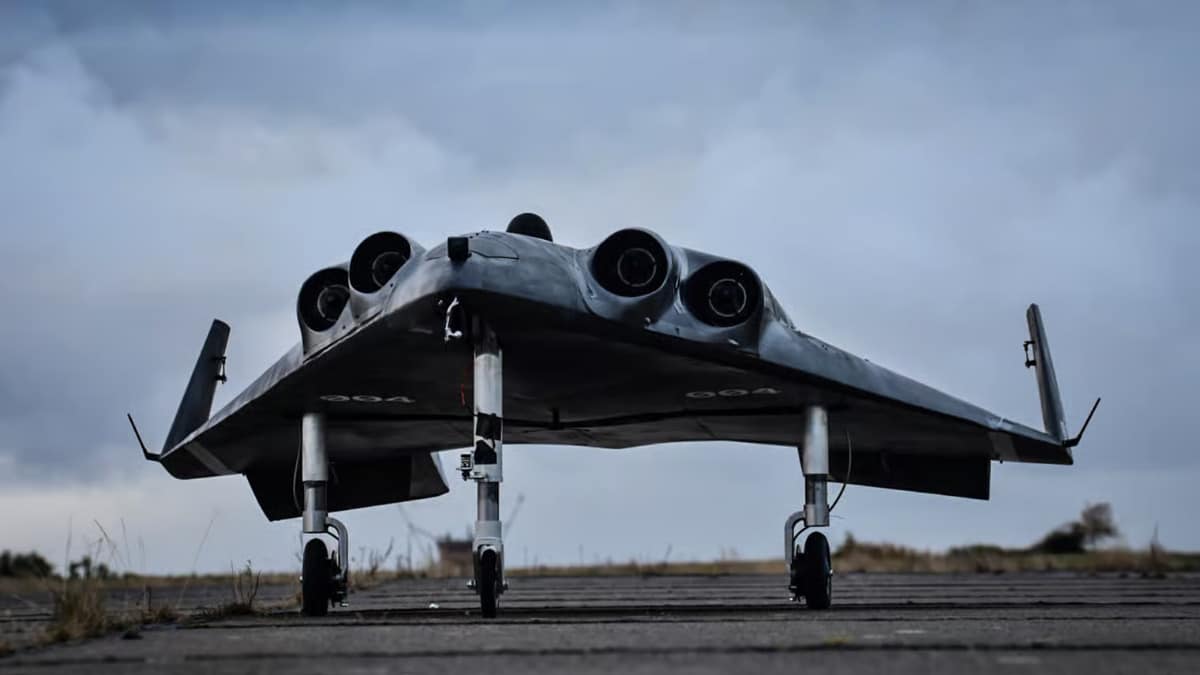Polaris Spaceplanes had high hopes for its Mira I prototype, but its debut flight ended almost as soon as it began. Designed to test an experimental aerospike rocket engine in flight for the very first time, the spaceplane crashed right after leaving the runway—before the engine could even be activated.
The crash was caused by a crosswind combined with a nosewheel swerve that proved impossible to recover from. While internal subsystems survived the impact, the fiberglass airframe was completely destroyed and is beyond repair.
This flight was meant to showcase the company’s AS-1 LOX–kerosene linear rocket engine. It would have marked the first ever in-flight test of an aerospike engine—an old concept that dates back 75 years, but which has never made it out of the lab.
Unlike traditional rocket nozzles, the aerospike design works in reverse. Combustion happens externally, and the surrounding atmospheric pressure shapes the airflow into a natural nozzle. As altitude increases and pressure drops, the air envelope self-adjusts—focusing the rocket’s thrust with increasing efficiency.
Bigger, bolder prototypes are already on deck
This kind of setup offers a big advantage: the engine becomes more efficient as it climbs higher, the exact opposite of conventional rocket engines that weaken and require staging. Despite the failed launch, Polaris is already preparing to test a larger prototype.
The next model, Mira II, will feature a five-meter wingspan and the same AS-1 aerospike engine. A third model, Mira III, is also in the works. Like Mira I, both new prototypes will include four jet turbines in addition to the rocket engine.
The Mira project’s ultimate goal is to develop a reusable spaceplane capable of carrying payloads—or even passengers—into space, echoing the functionality of a space shuttle. But based on this first attempt, that vision may still be a long way off.
A scaled-down spaceplane completes 15 test flights on the path to launch
Article by Sylvain Biget, published September 22, 2023
While Mira I struggled to get off the ground, Polaris Spaceplanes is celebrating another success story: the Mira-Light prototype has just completed 15 test flights without a hitch. According to the company, this small-scale model could eventually evolve into a commercial spaceplane known as Aurora, ready for flight as early as 2026.
Though only 2.5 meters long, Mira-Light successfully demonstrated the future spaceplane’s flight behavior. It’s powered by four electric engines and logged a total of 40 minutes in the air. The goal of the tests? To validate the aerodynamics and flight control systems before scaling up.
Once this data is fully processed, Polaris plans to replace the electric engines with a full-sized aerospike rocket and multiple jet engines.
Could Aurora fly in 2026?
That’s the hope. Future models will be 4.25 meters and then 6.7 meters long, each equipped with four jet turbines and a full aerospike rocket engine. Test flights will involve rocket-powered, high-altitude runs at supersonic speeds.
If all goes according to plan, the final version—Aurora—will be able to carry up to 10 tons of payload at suborbital velocity. Polaris Spaceplanes says commercial missions could begin as early as 2026 or 2027.

Sylvain Biget
Journalist
From journalism to tech expertise
Sylvain Biget is a journalist driven by a fascination for technological progress and the digital world’s impact on society. A graduate of the École Supérieure de Journalisme de Paris, he quickly steered his career toward media outlets specializing in high-tech. Holder of a private-pilot licence and certified professional drone operator, he blends his passion for aviation with deep expertise in tech reporting.
A key member of Futura’s editorial team
As a technology journalist and editor at Futura, Sylvain covers a wide spectrum of topics—cybersecurity, the rise of electric vehicles, drones, space science and emerging technologies. Every day he strives to keep Futura’s readers up to date on current tech developments and to explore the many facets of tomorrow’s world. His keen interest in the advent of artificial intelligence enables him to cast a distinctive light on the challenges of this technological revolution.


